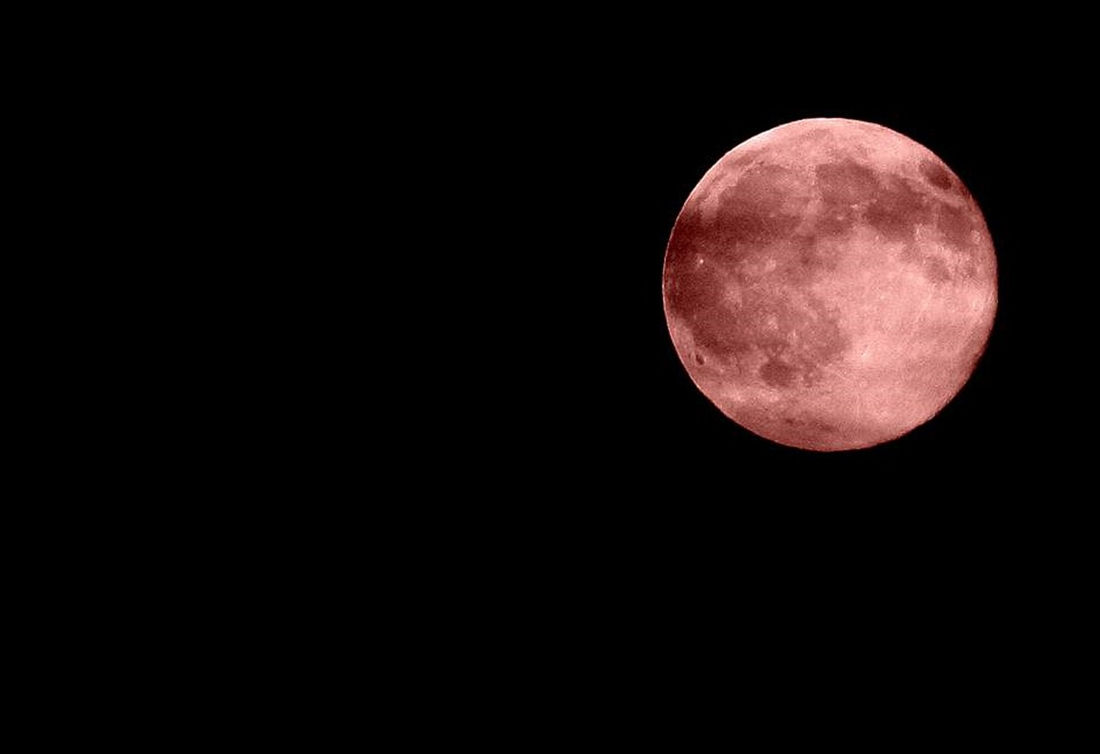
This April will bring us a special celestial event – the ‘Pink Supermoon’.
It will be the first of the two supermoons of 2021. This term is used to describe the astronomical phenomenon when the distance between the moon and Earth is at its slightest. When the full supermoon takes place, our natural satellite looks brighter and bigger in the sky than usual.
According to the estimates, supermoons are 15% brighter and 7% bigger than regular full moons, but in reality, this difference is very hard to notice by the naked eye.
The next full moon phase will begin on Monday night (April 26, 2021). The moon will be perfectly visible after the sunset (depending on the weather conditions, of course), but the peak of its illumination will come in the late evening.
It will appear full for three days in total and will reach its brightest point at 11:33 p.m. EDT on Monday. This will be the perfect time for skywatching – if the weather in your city happens to be cloudless on that day.
No, sorry, the moon won’t actually turn pink on April 26. This term became well-known in the 1930s when the Old Farmer’s Almanac decided to publish Native Americans’ names of the full moons and the corresponding lunar months.
April’s full moon is called pink because wildflower Phlox subulata, also known as moss pink, beings to blossom during this time of the year. It grows across the eastern parts of North America and is one of the earliest spring flowers.
Different indigenous people of North America use different names for this full moon. Most of those have to do with the natural phenomena that typically take place during this time of the year, but some also have a spiritual meaning. It comes as no surprise since many aspects of Native American spirituality rely on natural forces and animal activity.
For example, the Algonquin people know it as the Breaking Ice Moon and the Dakota refer to the Moon When the Streams Are Again Navigable. As you can guess, both names describe the melting ice.
Some Native American peoples refer to the plant growth and the activity of animals. For example, the Oglala call it the Moon of the Red Grass Appearing while for the Tlingit people, it’s the Budding Moon of Plants and Shrubs. There is also the Frog Moon according to the Cree and the Moon When the Ducks Come Back in Lakota tradition.
In Anishinaabe indigenous culture, April’s full moon is known as the Sucker Moon. The legend states that during this time of the year, the suckerfish returns to lakes and rivers from the spirit world to purify water and aquatic animals.
All these lovely names demonstrate the bond the traditional cultures of North America had with Mother Nature.
Getting back to astronomy, the second supermoon of the year will occur exactly one month after the Pink Supermoon – on May 26, 2021. It will too bear a romantic spring name – the Flower Supermoon.
It will be an even more special celestial phenomenon as it will also be a total lunar eclipse! Till then, make sure you don’t miss the Pink Supermoon this Monday!